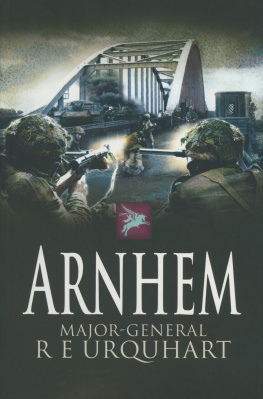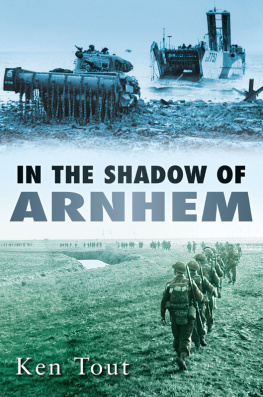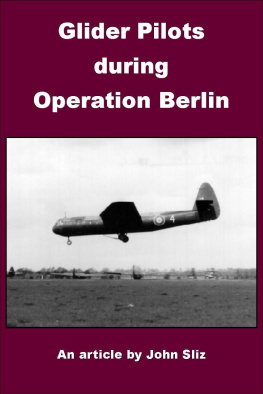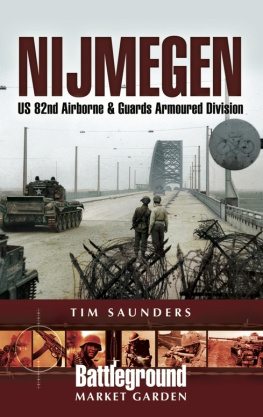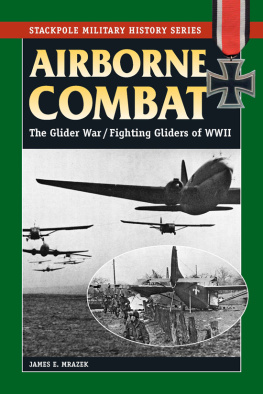

First published in Great Britain in 2009
and reprinted in 2010 by
PEN & SWORD MILITARY
An imprint of
Pen & Sword Books Ltd
47 Church Street
Barnsley
South Yorkshire
S70 2AS
Copyright Mike Peters, 2009, 2010
ISBN 978 1 84415 763 1
ISBN 9781844683482 (epub)
ISBN 9781844683499 (prc)
The right of Mike Peters to be identified as Author of this work has been asserted by him
in accordance with the Copyright, Designs and Patents Act 1988.
A CIP catalogue record for this book is
available from the British Library
All rights reserved. No part of this book may be reproduced or transmitted in any form or
by any means, electronic or mechanical including photocopying, recording or by any
information storage and retrieval system, without permission from the
Publisher in writing.
Printed and bound in England
By CPI
Pen & Sword Books Ltd incorporates the Imprints of Pen & Sword Aviation,
Pen & Sword Family History, Pen & Sword Maritime, Pen & Sword Military, Wharncliffe
Local History, Pen & Sword Select, Pen & Sword Military Classics, Leo Cooper,
Remember When, Seaforth Publishing and Frontline Publishing
For a complete list of Pen & Sword titles please contact
PEN & SWORD BOOKS LIMITED
47 Church Street, Barnsley, South Yorkshire, S70 2AS, England
E-mail:
Website: www.pen-and-sword.co.uk
Contents
Maps/Forms
Foreword
By Brigadier M.D.K. Dauncey DSO DL
I can think of no stronger partnership than that of my long-standing friends Mike Peters and Luuk Buist, who have produced this fascinating account, Glider Pilots at Arnhem . I did not take part in the airborne landing on Sicily or in Normandy and only achieved an average grading on my Second Pilot's Flying Course. So the offer from Mike to write this foreword was not just a huge surprise but also a great honour. The book, which is unique, has surpassed all my expectations. When the proofs arrived, they were too exciting not to read straight away, which I did far into the night!
Good luck always plays a major role in war. It certainly led to the widely differing escapades of the glider pilots in the battle. The first lift, on 17 September 1944, was a trouble-free armada as regards the flight and landings which came as a complete surprise to the enemy. However successive lifts came under increasing pressure as the week wore on, with the German anti-aircraft batteries, enemy fighters and ground troops all ready and waiting for the arrival of our gliders, aircraft and paratroops. On Thursday afternoon, 21 September 1944, a resupply mission to Arnhem was mounted by 190 Squadron RAF. Out of the ten Short's Stirlings that took off from RAF Fairford bound for Arnhem, only three returned to England. Not one of the surviving aircraft landed undamaged. They all flew straight and level over the planned Dropping Zone, disregarding the deafening flak. It was heart-breaking to watch such outstanding bravery by our aircrews and air despatchers.
By this time there was a shortage of glider pilots in England, as about 90 per cent of the Regiment had already taken part in the landings at Arnhem. Staff Sergeant Roy Howard, who successfully landed his glider in Normandy in the dramatic coup de main attack on the Orne Bridges, found that the sixteen gliders flying from RAF Keevil had composite crews drawn from A, B, D and E Squadrons. He only met his second pilot Sgt Davey for the first time on the day of the flight and was never to see him again after that eventful day.
When the Airborne troops under Lieutenant Colonel John Frost at the bridge had finally been overwhelmed, a divisional bridgehead was formed. Known as the perimeter, it was loosely centred on Divisional Headquarters at the Hartenstein Hotel in the north and the Royal Artillery gun line near Oosterbeek Church to the south. The aim was to hold this bridgehead until the arrival of XXX Corps. After the landings, the glider pilots were to be withdrawn to England to prepare for further airborne operations. Instead they were ordered to remain with 1st British Airborne Division. They proved to be invaluable reinforcements, and as this book will show so vividly they took a full part in every aspect of the battle from the first landings to the final withdrawal over the river. Here the glider pilots organized and taped the withdrawal for the Division. The glider pilots were known as Total Soldiers; this is the kernel of this unique book.
Trevor Francis and his wife Meg are old friends. Shortly after the first lift landings, we were told to remain with the Light Regiment RA near Oosterbeek Church as a protective infantry screen. However Trevor wanted to do more. He became a gun number with one of the 75mm Pack Howitzer guns of the light regiment and fought as a member of a gun crew throughout the week. Sadly one of his last duties was to help the crew to cast the gun's breech block into a deep ditch nearby, this last act of defiance rendering the gun useless to the enemy.
I have always felt that as infantryman we compared favourably with our enemy counterparts, who were shy of us. There was no shouting on our part it was unnecessary as all airborne soldiers got on so well. My commander, Major Bob Croot, OC of G Squadron, had the wonderful knack of always being with us when things hotted up. Also Lieutenant Colonel Iain Murray, who used to take the trouble and the risk to come and see us from Divisional HQ; it made such a difference to feel that he had our interests at heart.
Finally I would like to end this foreword by expressing my gratitude to the Dutch people for all of their kindness and help both during and after the battle. Their courage, support and generosity were unbounded. They will never accept that we caused them so many hardships and losses; they merely say you gave us hope. What wonderful friends. No wonder we keep returning to Arnhem and Oosterbeek to see them, their children and their grandchildren year after year.
This is a superb read and unique in that the idea has never been used before. So heartiest congratulations to Mike and Luuk on producing such a splendid account of the Glider Pilots at Arnhem which will always be enjoyed and appreciated.
Mike Dauncey
Uley, Glos
Acknowledgements
It has been my ambition to tell the story of the men of the Glider Pilot Regiment and their role in the Battle of Arnhem for many years. I promised my many friends in the GPRA that one day I would collate all of their memories of Arnhem into a single book focussed on their exploits an aspiration shared with my good friend and fellow honorary GPRA member, Luuk Buist. Without Luuk's co-operation and assistance I could not have written such a comprehensive account of the events surrounding the GPR in September 1944. Researching a battle that took place in Holland when you are located in England has its own practical problems, even if it is as well documented as Arnhem. Luuk has unselfishly shared his intimate knowledge of the battlefield, and has given me unrestricted access to his extensive archives and his unique database of 1,250 veteran names collated during thirty years of personal research. I must also single out his hard work producing and formatting all the maps and photographs. We both hope that the result of our joint efforts has produced a worthy and enduring tribute to the men of the Glider Pilot Regiment.
There are many other people to thank for helping us to achieve our aim. First of all, two friends and fellow battlefield guides, accomplished authors Jon Cooksey and Tim Saunders. Two years ago they both persuaded me that I could write and encouraged me to start working on this book. Once the book was underway, further encouragement came from other battlefield guides, Bob Hilton, Bob Darby and Major John Greenacre AAC. They have all freely shared their extensive knowledge of Arnhem and Airborne Forces with me. Thanks are due as well to Major Steve Elsey AAC, firstly for his research activities at the Museum of Army Flying, and also for suggesting that Luuk and I combine our efforts to produce this book. Steve and Arthur Shackleton are both responsible for the resulting partnership. Luuk would also like to acknowledge the support and inspiration provided by his good friends, glider pilot veteran John McGeough and John Howes for his hard work in the National Archives. Assistance was given too by Niall Cherry and the Friends of the Airborne Museum Hartenstein.
Next page



